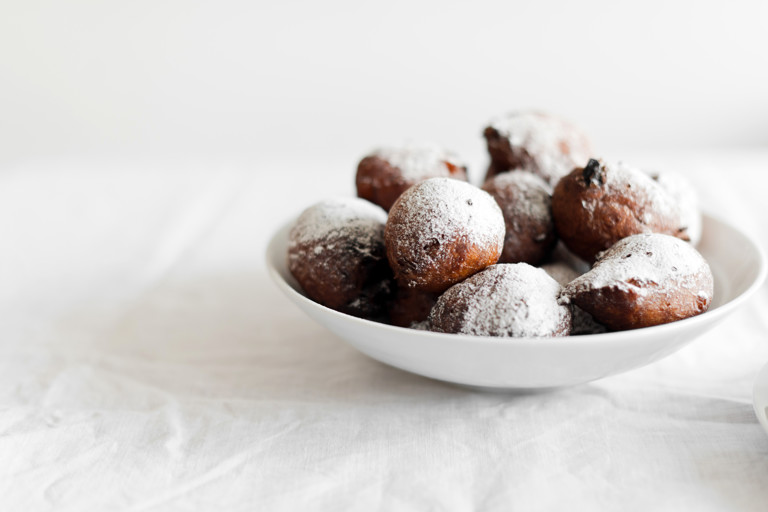Venetian frìtole
A true symbol of the Venice Carnival, Valeria's frìtole recipe will help you perfect these delicious sweet snacks, laced with grappa-soaked raisins and pine nuts. If you're heading to Venice carnival this year, check out Valeria's guide to where to eat the best frìtole in Venice, so you can stock up on snacks while you're there.
Every year this time of year, the windows of all bakeries and pastry shops in Venice are filled to the ceiling with piles of dark-brown, sugary globes – the Venetian Carnival sweet par excellence – the celebrated, delightful frìtola.
The first notes of the presence of the frìtola in Venice date back to the 14th century (Marco Polo was known to be worshipper). During carnevale, the alleys of Venice used to be dotted by the fritolèri, itinerant masters of the fried dough, who would lure the passers-by into buying one of their piping hot doughnuts. The fritolèri were crucial figures in Renaissance Venice; so much so that they had their own union rules, which dictated, among other things, the areas in which each vendor would be trading. Their popularity within the city grew exponentially until, in the 18th century, the frìtola was elevated to the rank of official sweet of the Serenissima Republic of Venice.
The original recipe for frìtole venessiane consists of a sweetened dough made with flour, eggs, milk, raisins and pine nuts, deep-fried by the spoonful in hot lard. These were sold on the street (they were most definitely considered street food), pierced onto skewers so people could eat them right away without soiling their hands. They were small, pillowy, rolled in sugar while still hot, often giving a subtle scent of anise liqueur or eau de vie.
Although no fritolèro remains in Venice, this old-school version of the frìtola survives in local bakeries as much as in people’s kitchens. Alongside these, which are called sensa gnente (without filling), one can now find larger, ever-indulgent fritòle stuffed with all sorts of creamy fillings – from custard to zabaglione, from chocolate to chantilly cream. These are, however, often reserved to pastry shops, while most home cooks stick to the easier-to-make, plain classic.
The recipe for frìtole venessiane sensa gnente we use in my family, which includes grappa-scented raisins and crunchy pine nuts, is very straightforward. It makes quite a large batch – so it’s definitely good for sharing. Here I suggest dusting the frìtole with icing sugar, but you can also roll them in caster sugar if you like the idea of a crunchy coating.
Ingredients
Metric
Imperial
Frìtole
- 100g of raisins
- 120ml of grappa, eu de vie or anise liqueur
- 500g of plain flour, sifted
- 1 pinch of sea salt
- 15g of active dry yeast
- 80g of caster sugar
- 1 unwaxed lemon, zested
- 2 eggs, medium, lightly beaten
- 40g of pine nuts
- 250g of whole milk, warmed
- 1l sunflower oil, for frying
- icing sugar, for dusting
Method
Get in touch
Please sign in or register to send a comment to Great British Chefs.


